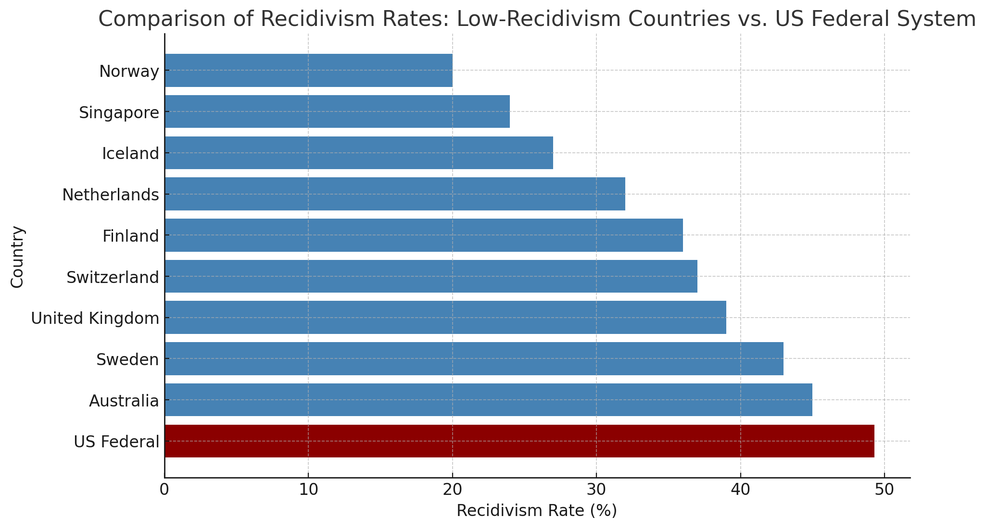The United States has long grappled with high rates of incarceration and recidivism, posing significant challenges for the criminal justice system and society at large. While state prison recidivism rates have been extensively studied, the recidivism trends within the federal prison system remain less frequently analyzed. However, emerging data suggest that targeted reforms and evidence-based policies could significantly improve post-release outcomes and reduce recidivism.
Understanding Recidivism in the Federal System
Recidivism rates vary widely based on the population studied, definitions used (rearrest, reconviction, or reincarceration), and the length of the follow-up period. For federal offenders, these numbers tend to be lower than those for state prisoners, largely due to differences in offense types, sentencing structures, and supervision upon release.
According to the U.S. Sentencing Commission, approximately 49.3% of federal offenders released in 2005 were rearrested within eight years. This includes not only new criminal offenses but also violations of supervision conditions, a significant factor in federal recidivism.
Comparatively, a Bureau of Justice Statistics study found that 71% of state prisoners were rearrested within five years, highlighting a stark contrast between federal and state systems.
The Impact of Supervised Release on Federal Recidivism
One critical factor affecting federal recidivism rates is the structure of post-release supervision. Unlike state systems, where parole violations often result in rearrest and reincarceration, federal inmates are placed under "Supervised Release," a system designed to monitor reintegration while reducing the likelihood of reoffending. However, violations of supervised release do not always lead to new arrests but rather administrative sanctions or reimprisonment.
This key distinction makes direct comparisons between state and federal recidivism rates complex. While many state prisoners are counted as recidivists due to technical violations, federal prisoners may not appear in re-arrest statistics unless they commit new crimes.
Lessons from Low-Recidivism Countries
Globally, countries such as Norway (20% recidivism rate), Singapore (24%), and Iceland (27%) have demonstrated that investment in rehabilitation, education, and post-release support significantly reduces reoffending. These nations prioritize reentry programs, vocational training, and mental health support—policies that the U.S. could expand within its own system to achieve similar reductions.
In comparison, the United States’ fragmented approach to reentry often lacks consistency, leading to higher recidivism rates in state systems and preventable failures within the federal system. While progress has been made through programs like the First Step Act, more comprehensive reforms are necessary.
The Need for Data-Driven Prison Reform
The path to reducing federal recidivism lies in adopting data-driven, evidence-based policies that focus on rehabilitation and reintegration rather than punitive reincarceration. Expanding vocational training, mental health care, and structured post-release programs can create lasting change and lower the burden on taxpayers while improving community safety.
At FixingBOP.org, we advocate for a justice system that moves beyond outdated punitive models and embraces modern, research-backed solutions. By recognizing the nuances of federal recidivism and implementing policies that reflect best practices worldwide, we can build a system that truly fosters second chances and reduces reoffending.
Sources:
